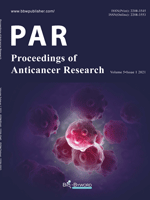Abstract
Objective: To investigate the status of occupational well-being of medical staff in tuberculosis department and analyze its influencing factors, so as to provide a basis for improving the occupational well-being of medical staff in tuberculosis department. Methods: In May 2020, we adopted the method of cluster sampling to select staff members from the tuberculosis departments of the Affiliated Hospital of Hebei University and infectious disease hospital. A total of 139 medical staff were recruited as the research subjects, and were investigated using medical staff occupational well-being scale. Results: The total score of occupational well-being was 76.46±8.97 points, There were statistically significant differences (P<0.05) in occupational well-being score among tuberculosis medical staff with different age, years of work, job title, night shift, marital status, and occupational type. The in?uencing factors of occupational well-being were the night shift, years of work, occupational type, and marital status (P<0.05). Conclusion: The overall level of occupational well-being of tuberculosis medical staffs is moderate, and occupational well-being is affected by night shift, years of work, occupational type and marital status. It is recommended that managers take targeted measures to improve the occupational well-being of tuberculosis medical staff.
References
Straume LV, Vitters J, 2015, Well-being at Work: Some Differences Between Life Satisfaction and Personal Growth as Predictors of Subjective Health and Sick-Leave. J Happiness Stud, 16(1): 149-168.
Adriaenssensa J, Hamelinkb A, Van Bogaertc P, 2017, Predictors of Occupational Stress and Well-Being in First-Line Nurse Managers: A Cross-Sectional Survey Study. International Journal of Nursing Studies, 73: 85-92.
Sanveingchan S, Phlainoi S, Chai-Aroon T, et al., Nurses Occupational Well-being of Retired Nurses with Productive Aging. Advanced Science Letters, 23: 1019-1023.
Zeng Q, Fu L, Wan B, et al., 2017, A Study on Job Stressors and Mental Health of Nurses in Tuberculosis Department. Chinese Journal of Tuberculosis Prevention, 39(10): 1137-1140.
Hu D, Ma Y, Na L, et al., 2011, Development and Reliability and Validity Analysis of Occupational Well-Being Scale for Medical Workers. Chinese Hospital Statistics, 18(2): 127-129.
Chen L, Liu H, Shang Y, et al., 2016, Preliminary Development and Reliability and Validity Test of Work Well-Being Questionnaire for Hospital Nurses. Chinese Journal of Modern Nursing, 22(15): 2091-2096.
Hu M, Su CY, Yu ZR, 2017, A Preliminary Evaluation of Occupational Well-Being and Intervention Effect of Nurses in a Public Hospital. Chinese Journal of Modern Nursing, 23(31): 4028-4030.
Tian H, 2010, Survey on Job Satisfaction, Social Support and Subjective Well-Being of Medical Staff in a Special Hospital. Sun Yat Sen University.
Ding C, 2006, Research on the Current Situation and Countermeasures of Doctor-Patient Relationship. Shandong University.
Zhuang X, Fu Y, Zhang H, 2017, Qualitative Research on Work Experience of Nurses in Acute Infectious Diseases Department. Evidence Based Nursing, 3(3): 261-265.
Jin X, 2016, Current Situation Analysis and Correlation Research on Nurses’ Health Promoting Lifestyle and Occupational Well-Being. Nanchang University.
Zhao Y, Wei L, Sun L, et al., 2017, Analysis on the Status Quo and Influencing Factors of Occupational Well-Being of Nurses in Qingdao Class A Hospitals. Journal of Nursing, 24(21): 4-7.
Li G, Li H, Wang X, et al., 2011, Investigation on Occupational Well-Being of Medical Workers and Analysis of Its Influencing Factors. Medicine and Philosophy, 32(13): 43-44,53.
Gao C, Tong X, 2017, A Survey on the Occupational Well-Being of Clinicians in Urumqi. Journal of Xinjiang Medical University, 40(9): 1209-1212.
